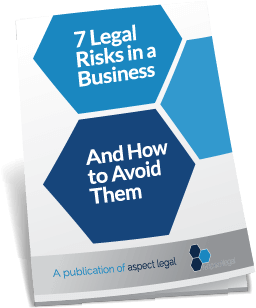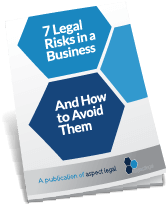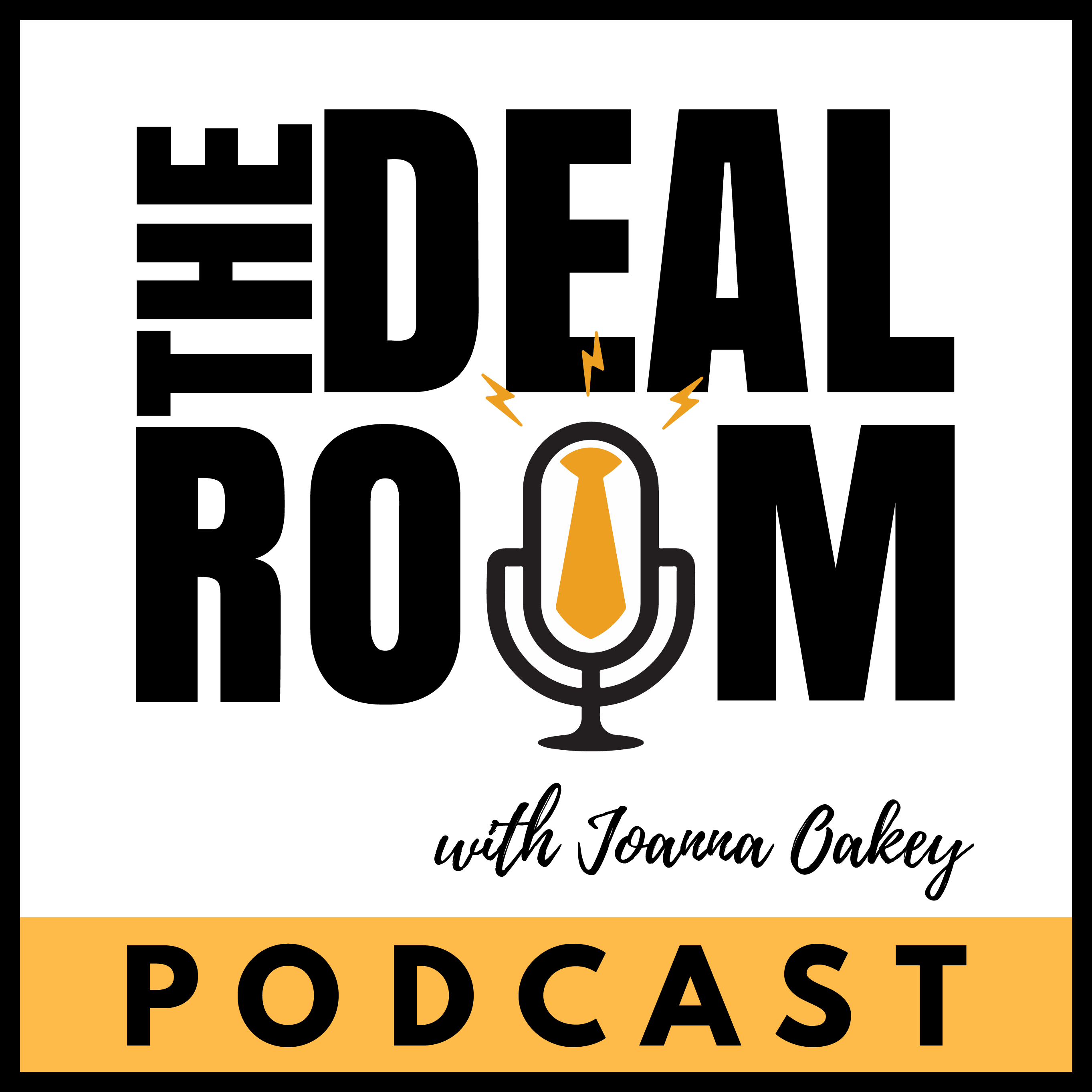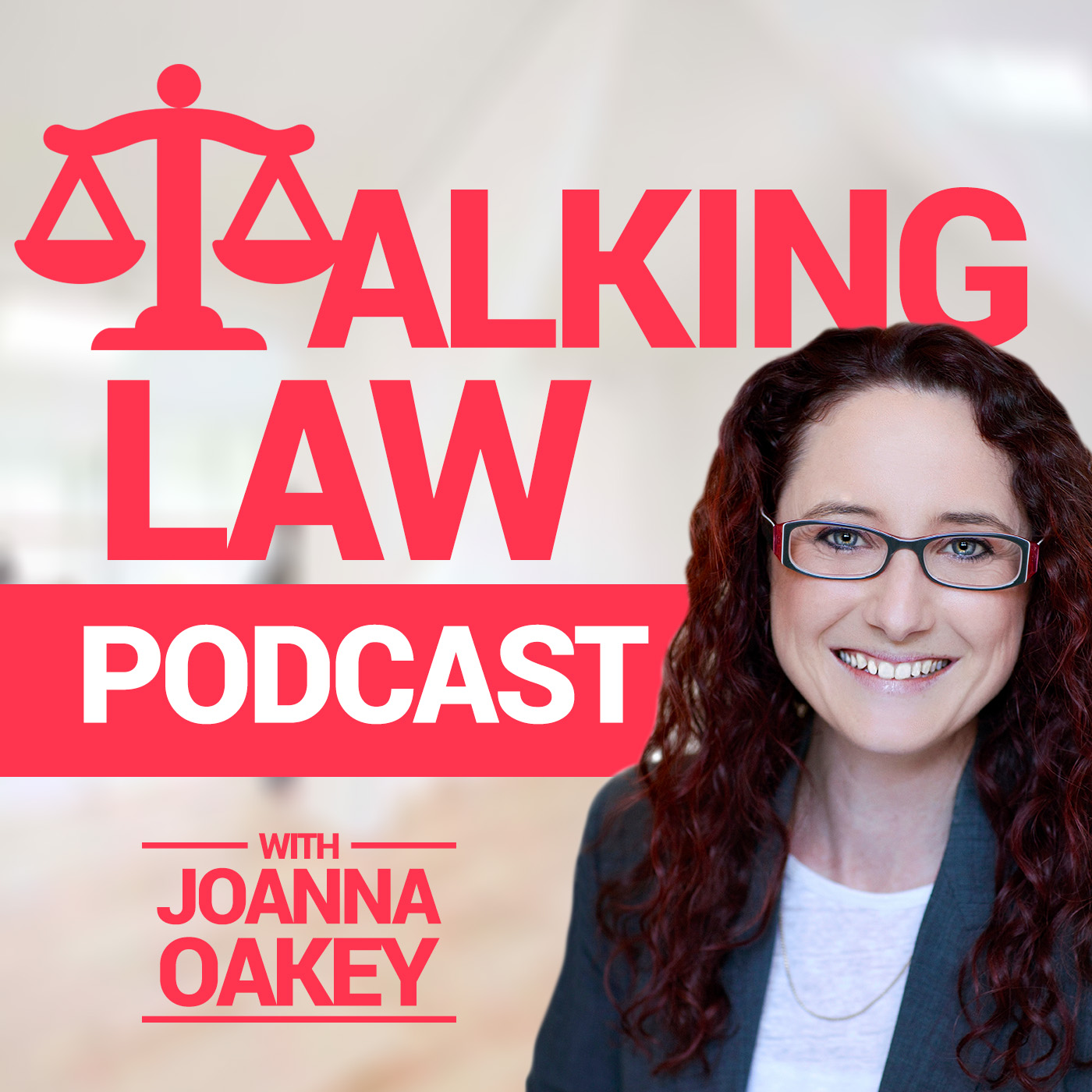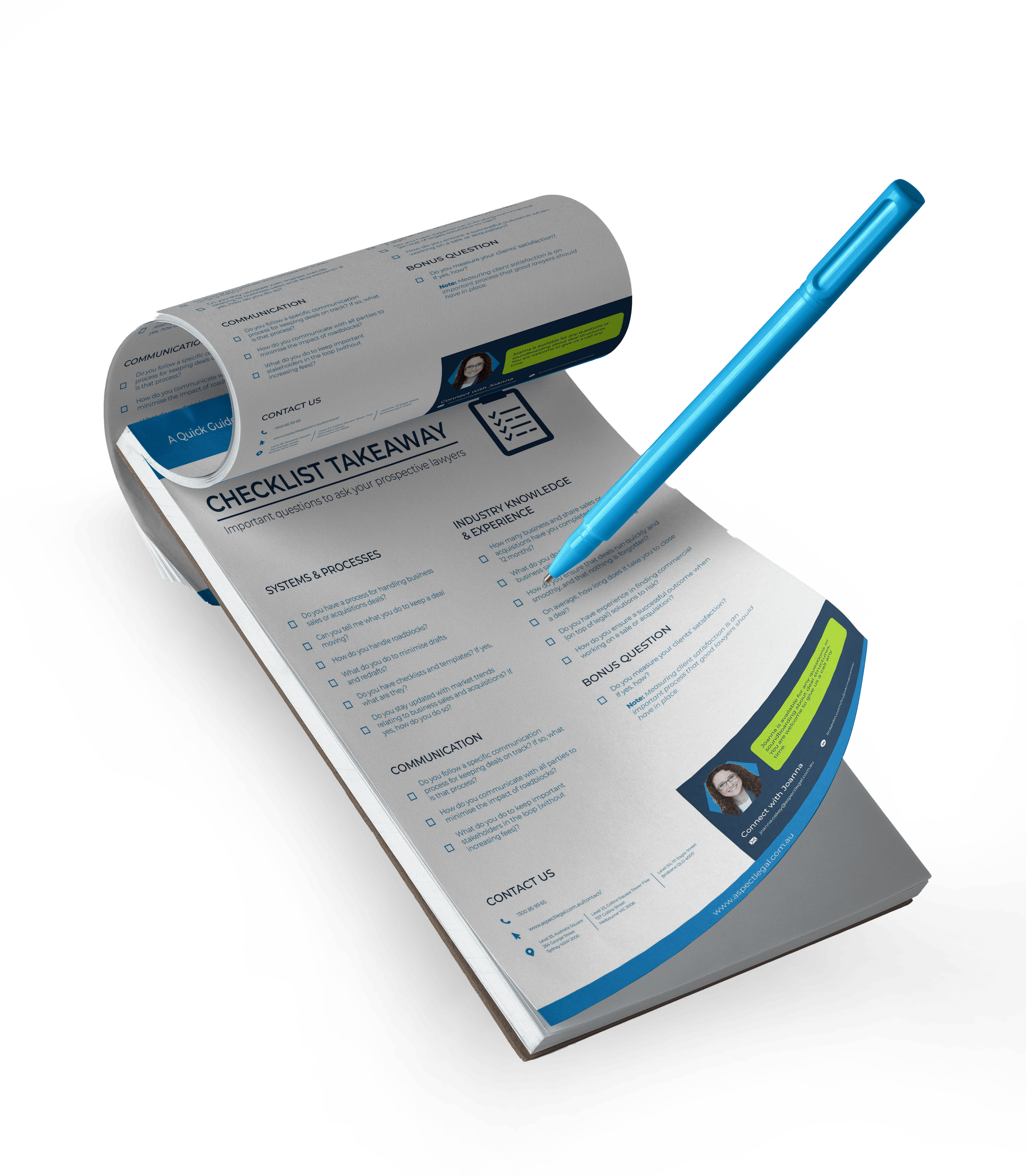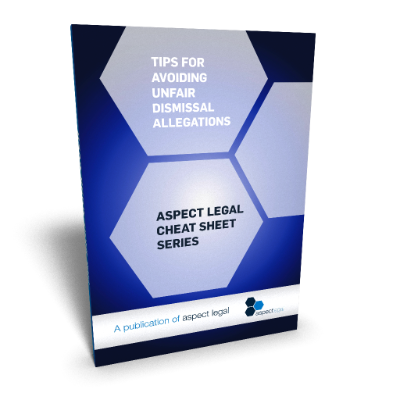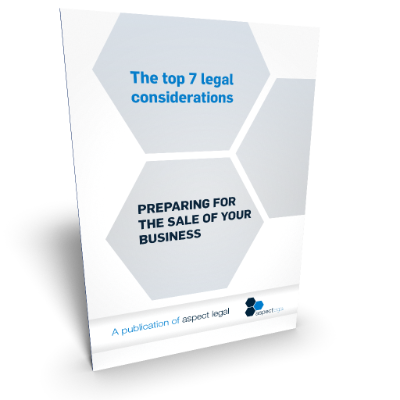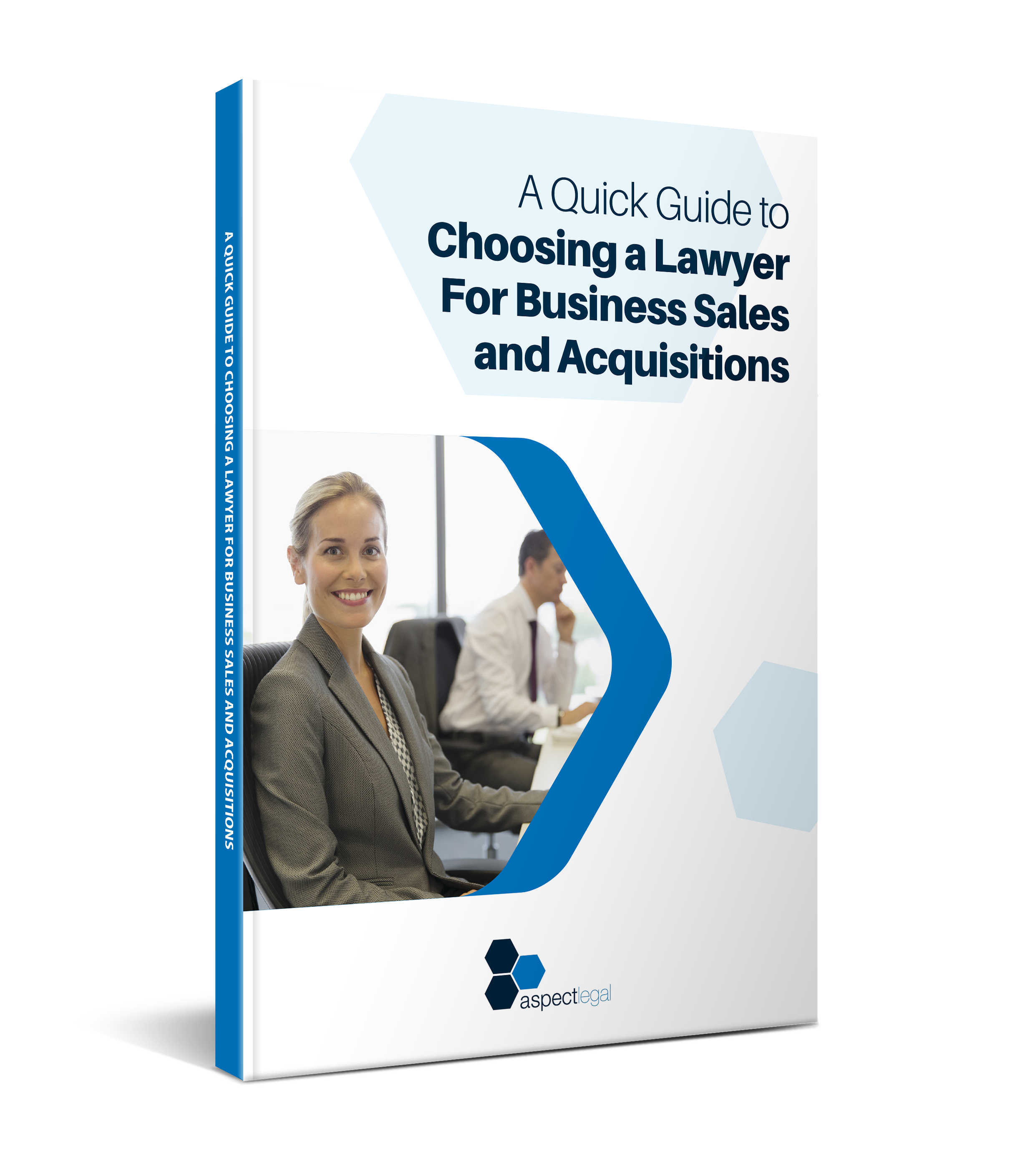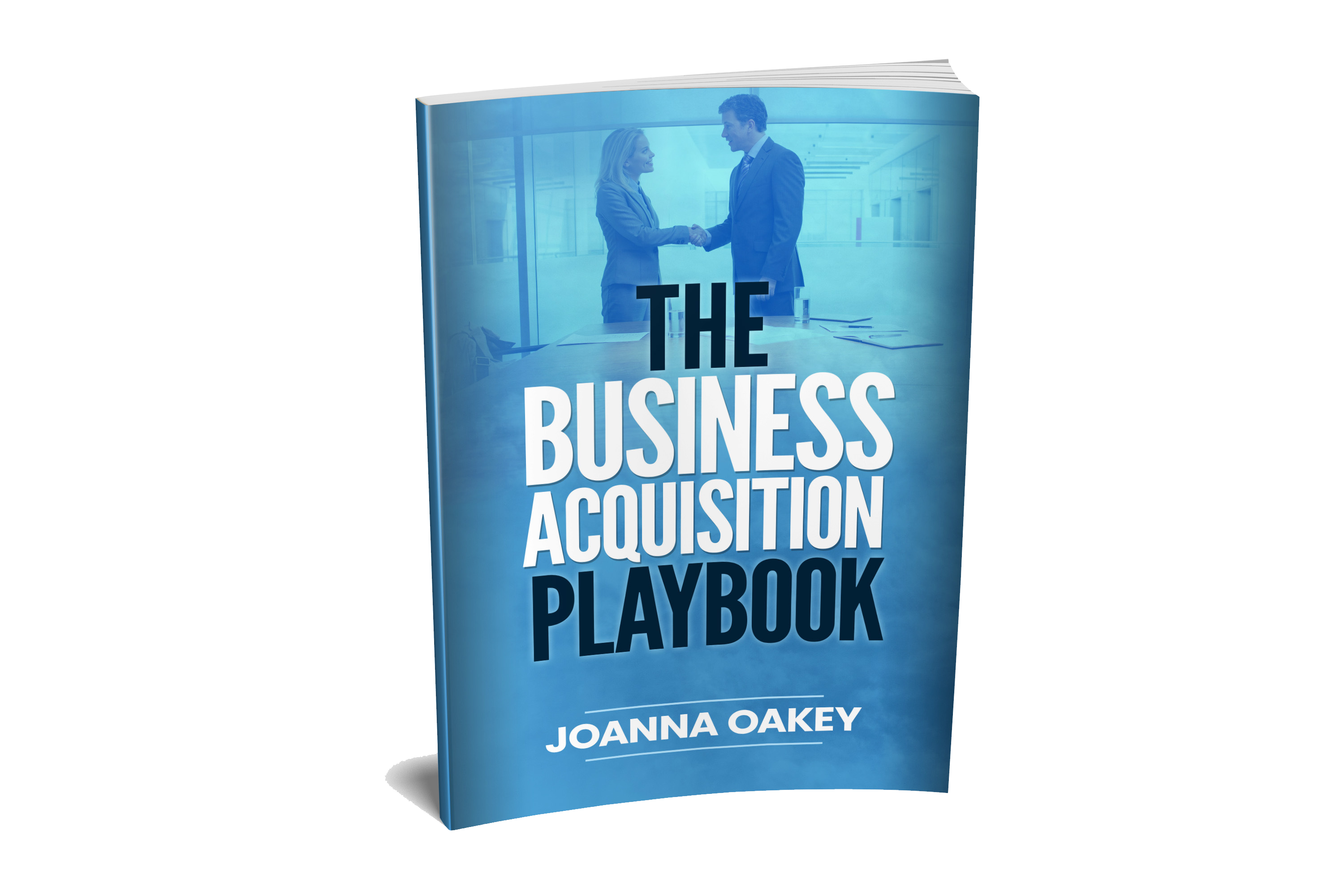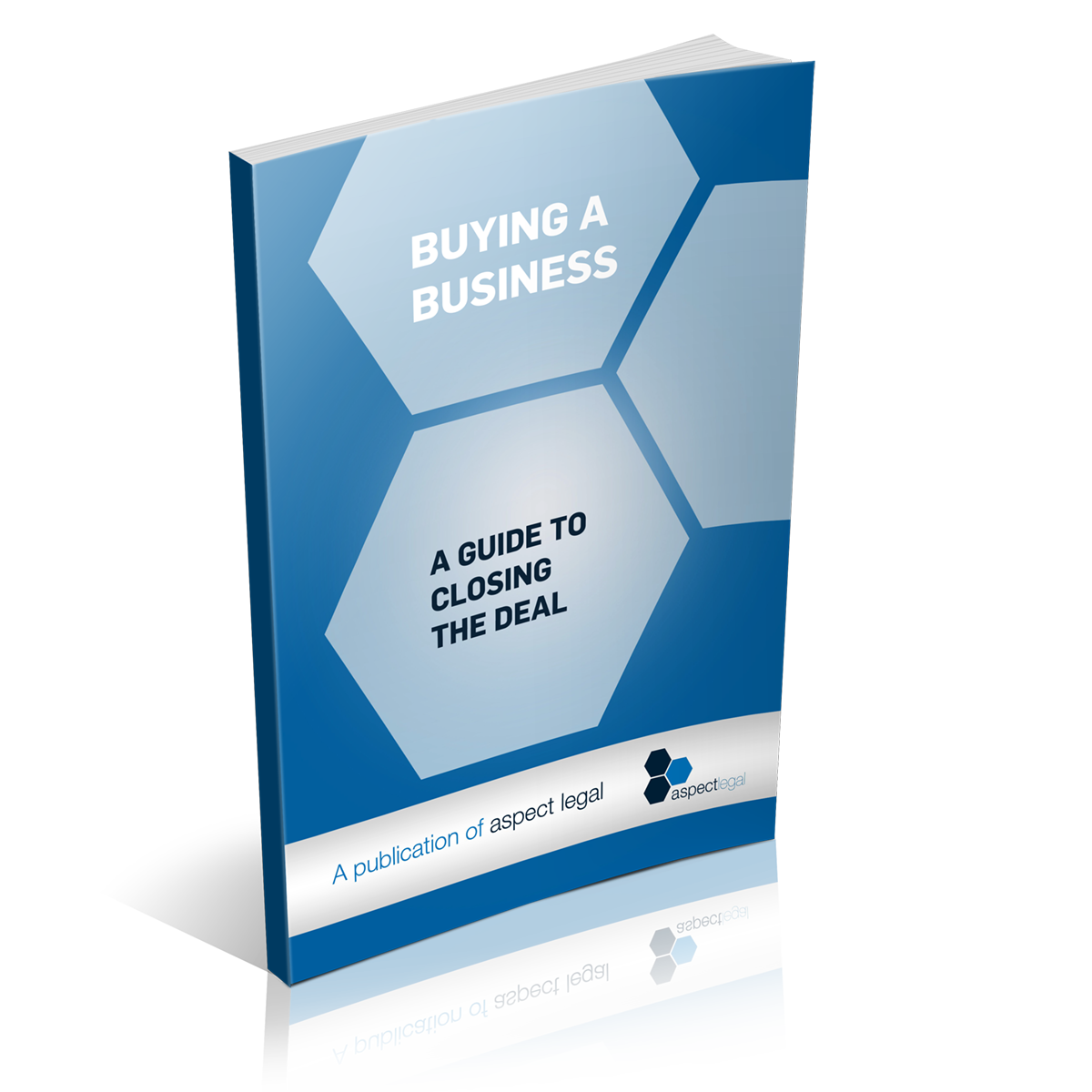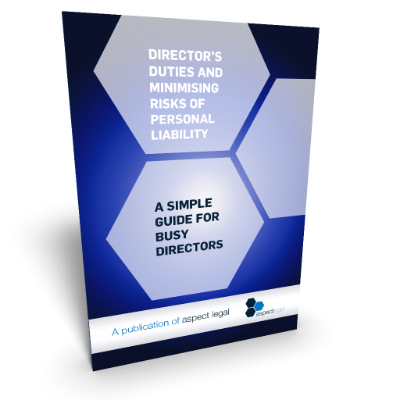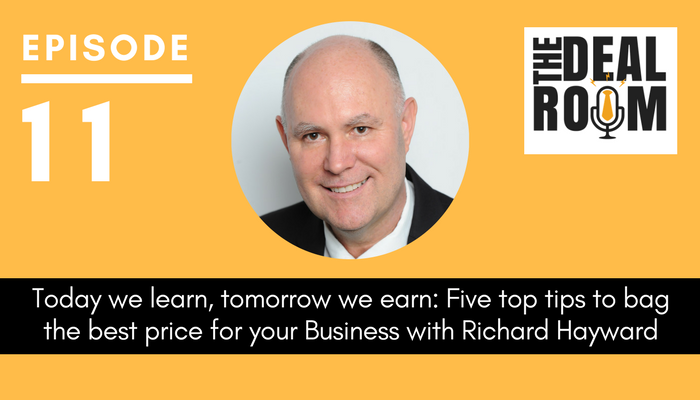
Learn how to make your business more valuable at sale with these five key tips from mergers and acquisitions expert Richard Hayward of HHMC Global. In this episode, we’ll help you identify where you stand right now and what action steps you should take to get to that point where you have a business that is an attractive sale proposition.

Episode Highlights:
01:30 Importance of making your business more valuable for sale
02:48 Elements of sustainability are crucial for service business
02:06 What is a trade sale?
02:48 Elements of sustainability are crucial for service business
06:08 Key #1: Have repeatable, predictable income streams
08:43 Key #2: Have a critical mass of staff
11:43 Key #3: Have a niche that underpins your credibility
13:27 Key #4: Have a good spread of clients
15:31 Key #5: Have the right engagement model
18:12 Action step #1: Measure how your business currently performs
20:29 Action step #2: Talk to the right professionals
Joanna: Hi, it’s Joanna Oakey here and welcome back to the Deal Room podcast. Today we are talking to Richard Hayward from HHMC Global. I’m really excited about the discussion with Richard because he’s someone that really knows his stuff and he really has some deep insight into that area of sales and acquisitions.
I’ve worked together with Rod and Richard from HHMC Global in many sale and acquisition transactions. And as I said, these guys really know their stuff. They have a lot of really deep insight, not just in the specialist industry that they work in (the recruitment industry), but across the concept of merger and acquisition transactions as a whole.
So today dig in as we talk about the top five key things that will make a business more valuable at sale.
Hi Richard! Welcome along today. So today we’re talking about the five key things that will make your business more valuable at sale. Why do you think this is a topic that is something that our listeners should be aware of?
Importance of making your business more valuable for sale
Richard: Hi Joanna. I think as business owners obviously there’s different strategies that people may take when I think about what exit they will make from their business. And realistically, one of the most viable is an exit by sale, a trade sale. There can be a lot of misconceptions amongst business owners about just what value their business may bring in the market. At HHMC, we mostly deal with small to medium organizations so a lot of my comments will be in relation to smaller organizations rather than large corporates.
What is a trade sale?
Joanna: Yup. Just tracking back briefly, you mentioned the concept of trade sale. Some of our listeners may not completely understand what that means in the context of the things we’re talking about. Can you give us a quick overview of what you mean when you say trade sale?
Richard: Basically, a sale to another organization within the same industry, another company as opposed to management buy-out or any other options. Basically, to those other companies who would see a real interest in the business.
Joanna: Perfect. So tell me, what are the five key things that will make your business more valuable at sale?
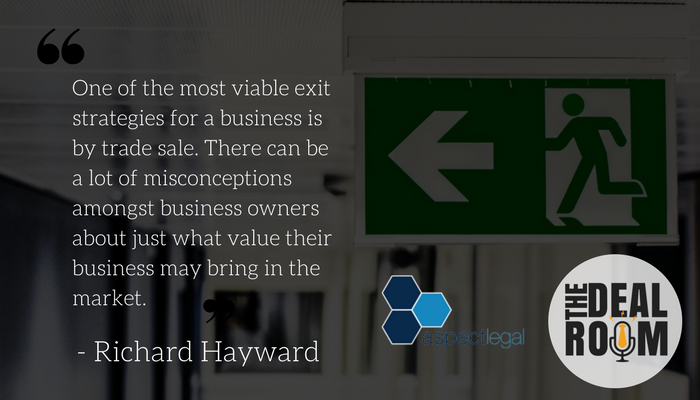
Elements of sustainability are crucial for service business
Richard: A little bit of an overriding comment here, Joanna. We really focus on service businesses. Our expertise is not so much on anyone who makes something. So if it’s a product that ultimately ends up on a shelf in a store, there may be some different elements to review there. But looking at service businesses, I’d start with saying it’s a given that any business has to be profitable.
Joanna: Absolutely.
Richard: And have some history of profitability. So I haven’t included that as one of the key factors. So put that aside. We take that as a given.
Joanna: And that is particularly relevant for service businesses obviously. There’s some more tech-related businesses out there that might have the ability to get a good valuation at sale even if they’re not running a profit. But this is certainly one of those areas where if someone’s looking to sell a service business, there needs to be an upside for a purchaser coming in. Right?
Richard: Absolutely. And you’re right. A technology business that has for example some great new product. It may not have reached that breakage point yet and it still has value because the technology is seen as contemporary. People will possibly acquire that based on the future upside.
But we’re talking about service businesses. You’re absolutely right. You need to have a history of profitability. But looking at some of those things that we strongly feel are characteristics that almost always apply, we really look at them as sustainability factors. The elements of the business that make it appear sustainable.
Joanna: And I guess if you’ve got elements that make a business appear sustainable, you’ve also ironically got a better business to be running yourself anyway. Right? There’s no downside in getting yourself prepared in a way that you’ve got a highly sustainable business because if you decide not to sell it becomes a better business for you to be running anyways.
Richard: Oh absolutely. Even if you weren’t going to sell your business, you want to build it up in a way that it has sustainability so that it’s giving you a better return. Always, better businesses produce better results. And that’s why you’re doing it in the first place.
Let’s look at an example of someone who’s decided, after several years of building up a very good business, that they want to sell up. They’re profitable and they start a sale process. Given that they have these sustainability factors, they’ll be attractive. But what will happen is that the buying organisations will be driven ultimately (at the more analysis they do), they may see that there is a strategic benefit in acquiring this particular business. But the more that they look at a business, the deeper they go with their analysis, the more that they will then look at the risk factors of the business.
Joanna: Right.
Richard: Companies acquiring companies inevitably are driven by reducing their risk. Reducing risk also means, on the upside, increasing their return in a shorter period of time.
Joanna: We certainly see that from a legal perspective as well. Buyers don’t like risk.
Richard: Absolutely. So maybe I should look at some of those key factors.
KEY #1: Have repeatable, predictable income streams
Joanna: Absolutely. Let’s launch into those. What’s the first of your key factors Richard?
Richard: You need to be able to demonstrate a repeatable business model. In different service industry segments that can be exemplified by the types of activities you do. I’m very familiar with the recruitment industry and I would give the example of temporary placements versus permanent placements.
In real estate, it would be similar to a rent roll and property management versus sale of a house. A permanent placement has a much bigger one off fee. A sale of a house gives you obviously pretty substantial fee. But they’re all one off transactions. One off transactions that once you finish, you don’t really know where the next one is coming from.
A business starts to gain every time that happens. Temporary placements, contract discontent in their approved industry roll on to build up 100 of those. You’re paying those people every fortnight. They’re earning you revenue every fortnight. They’re earning you profit every fortnight. A buyer will look at that and say “Even if I don’t do this acquisition very well, my risk is reduced by the fact that there is a continuous revenue stream.”
Joanna: And I guess some of those repeatable predictable income streams can also potentially be on the permanent side as well if we’ve got a preferred supplier agreement or various contractual rights that the selling business has to offer up that they can transfer over to a buyer as well.
Richard: Yes absolutely. It’s probably a slight step down from temporaries in that example. But absolutely, if you have contractual arrangements that have a history of producing revenue this year, last year, the year before, then that’s demonstrable. You could see that it exists. It can be measured. It really means it’s quite likely that next year that’s going to happen again.
Joanna: Right. And so it’s that predictability of income that you can then show to a buyer coming in so that they feel that they have some guarantees of the ongoing revenue stream. I guess that’s what we’re getting to here, isn’t it?
Richard: Absolutely. Yeah, that’s right.
Whatever you’ve done in the past is great history in terms of business results. It’ll be profit. Whatever you’ve done in the past is great history and good to know. But any buyer naturally is concerned about what next year’s profits are going to be after they have bought the company. So all of those facts that help support the likelihood of next year being a good year are really key to the decision making and the value that they may put on the business.
Key #2: Have a critical mass of staff
Joanna: Great. I think that’s a really important one. And number two, what’s the second key thing that you believe will make your business more valuable at sale?
Richard: If you think about the service businesses, then you know it means you’ve got to have enough people to deliver those service before you sell them in the first place. Ultimately, having a critical mass of staff is a very important factor.
People are inherently important in any service relationship with clients. It is people that sell new business. It’s people that do the work. It’s not unlikely that when a buyer comes along (two organisations are facing some integration issues and so on) that some people are going to not like that change and move on.
If you have a very small business, maybe five or six people, you’re pretty exposed. Buyers are going to think well it’s making good profit and some good clients. But if something goes wrong and lose a couple of people, you’re not left with very much at all.
As to what a critical mass is by size, it’s probably pretty dependent on different industries really. But in businesses that we’re familiar with, a number around twelve or a little more is when you become a bit more sustainable because you’ve got some critical mass.
Joanna: And do you also talk to your clients about ways that they can engage in locking in staff as well? I don’t necessarily mean contractually (although that might be one option, giving them some performance bonuses that encourage them to stay on and carry over to a new organization), but are there other things that you have seen work well in an organisation to keep the critical mass there? Particularly if they have smaller staff numbers, to encourage the staff to stay on board through the transition into the new ownership?
Richard: Look that’s a really good question. I think a lot of companies don’t always do that too well either on the selling side or the buying side. It’s one of the reasons why there is frequently a bit of a turnover when acquisitions take place.
Incentives do work for people motivated by that. And I think many organisations identify the one or two or three really key staff sometimes as you know, those names can get written into a purchase and sale contracts. Unless there are some good commonsense management attention to those people and ensuring that maybe their interests are being addressed longer term, then maybe some of them will do their required period and leave, unless they’re feeling that the new organization works for them.
Joanna: I guess this all leads into an interesting topic as well that we won’t talk about today (but maybe we should come back together and talk about later on one day) which is the points that are relevant in transition. There’s a lot of interesting things in some of the points that you’ve talked about now that are relevant to that topic.
Richard: Definitely.
Key #3: Have a niche that underpins your credibility
Joanna: For now though, moving on to point number three, what’s the third key thing that you think makes a business more valuable at sale?
Richard: I really do think it’s important for the business to stand for something, to have some credibility in the delivery of their services within maybe some sub specializations or one key area. In the legal world that’s pretty clearly defined. The larger firms have different divisions in different areas but there are specialist criminal lawyers, commercial lawyers, family lawyers and personal injury lawyers. If you translate that through to some other fields of recruitment, clients want to know that you can actually find them the best IT people or the best accountants.
You have to be able to demonstrate that you have your expertise in the industry segment that you’re wanting to work with and that you’ve been working with. And I think it does apply across different industries. There are PR firms or communications firms who are specialists with the pharmaceuticals. They know the sector. They’re seen as being the go-to people in that sector. The idea of the generalist in any sector, I think, is pretty hard to sustain.
Joanna: And I guess part of having a niche is building, number one, for a business that doesn’t at the moment, obviously they need to find a niche to build out, to build that depth. But they also then need to build up their credibility and authority in that area as well. So I guess it’s not just about niching. It’s also about niching in a way where they’re known for the knowledge in that area. So really getting deep.
Richard: Yes. Absolutely. Otherwise, why is that client going to use your services?
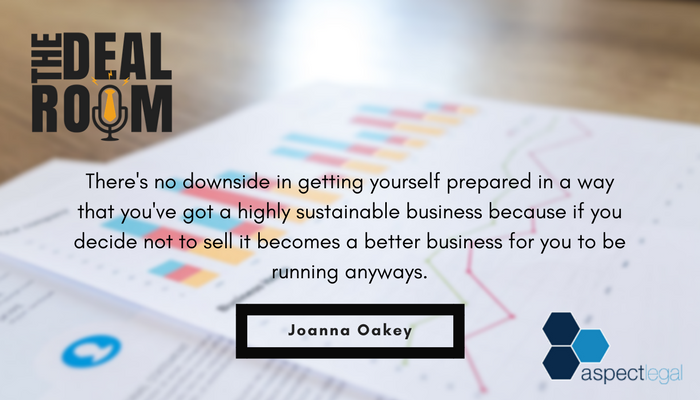
Key #4: Have a good spread of clients
Joanna: And what’s the fourth key thing that will make your business more valuable at sale, Richard?
Richard: A fine balancing act between having too few clients and too many, so the client revenue distribution. If your business (again we’re talking about small to medium businesses), if you built up your business out of just a few clients, it can be very profitable. But it leaves you very exposed.
If you’re fortunate enough to have a client the size of one of our big four banks who keeps on using your services, you’re going to do pretty well. But a decision can be taken to switch to another supplier pretty quickly and you’ve just lost 45 percent of your annual revenue in one decision. So a good spread of clients being reducing that risk to a buyer of the concept of a loss of one, two, three key clients is critical. Not to be taken to extremes. It’s also not attractive to have massive churn so that in any year you’re pretty much doing new work with new people all the time.
You do need to be able to demonstrate continuity of clients. So you’ve had clients for two, three years and they continue to use you, ideally with contractual arrangements. That’s great. But there has to be enough of them to one individual client with perhaps more than 15 percent on average over the three previous years. If they’re starting to get to more than 20, 25, 30 (depending on the size of your business), you’re probably looking a little bit exposed.
Joanna: Okay great. So the recommendation is keep any one client under the 15 percent of your total turnover level. Try and get a good spread, but not too many clients that you don’t have enough depth and longevity.
Richard: That’s right. That 15 percent is a bit of a guideline. It’s not hard and fast. It’s just to suggest that if that figure is getting to be much more than that and you have been in business for a few years (you’re not just a start up), then that probably is getting a little bit exposed.
Key #5: Have the right engagement model
Joanna: Good point. And the fifth and last thing on your list there Richard for what will make your business more valuable at sale.
Richard: It’s all about how you engage the client, in what manner, what’s your model. This is not new. It’s all about the strategy you adopt, whether you are able to go beyond being a transactional provider of one offs or provide something that added value to the client and strategic benefit to them.
The engagement model I’m going to use is the recruiting industry because I think it’s quite a good one. Similar concepts apply to other service industries.
Many recruitment companies provide a person. There’s a vacancy in one of their clients and they provide a person and that’s great. They get paid a fee and they can be quite successful. But you haven’t really embedded yourself with the client. They’re not seeing you doing more than just providing this individual for this position.
There’s an excellent example of recruitment companies who’ve seen great success by being workforce managers providing a total workforce solution. For example, it could be someone who is a provider of nurses. They do more than just sourcing nurses and get the nurses to turn up the first time. They’re actually running the entire rosters for their clients and shifts against the rosters and perhaps providing the software to run the shifts and rosters.
If you had that type of relationship, that’s a long term ongoing relationship where you’re providing clearly a deeper level of outsource solution to your customer, apart from being of great value add to the customer it’s pretty hard to lose a client as long as you’re doing a good job, because you’re embedded. You’re locked in. They become pretty sticky customers. They don’t change those sorts of business relationships readily or quickly.
Joanna: And I guess having sticky customers almost creates this full circle coming back to really support the concept of repeatable, predictable income streams where we started out these five key things list. It’s almost like a big cycle, isn’t it?
Richard: Good observation. Yeah, it is. Absolutely. It really is about reducing the risk proposition. Am I going to make my return on this investment of acquiring this business within X period of time? What are those things that reduce that risk for me and increase my likelihood? It is about repeatability and predictability.
Action step #1: Measure how your business currently performs
Joanna: What do you think the action steps are for a business? There’s a lot of things there for a business to think about, right? What are the action steps that you’d recommend to our listeners in terms of how they can go and start implementing some of these things?
I guess one of the things is they need to sit down and devote time to thinking about each of these areas and measuring how their business currently performs in each of these areas in repeatable, predictable income streams. Have they got critical mass? Do they stand for something? Do they have a niche that makes them credible? Do they have a good spread of clients? And do they have a good engagement model?
I guess it’s about referring back to where they are at the moment and building plans for the future. But how long before a sale does a business owner really need to be going and thinking about each of these areas? Because it seems to me that the things you’re talking about here will probably take a while to create and to shape until you’re in the situation where you’re in the best position for sale.
Richard: Yes definitely. You said at the outset of your comments there that you need to be able to measure where you are compared to others. I think that’s really a very important point. Unless you know where you are and you’re measuring it, I don’t know how you can move forward. So the starting point is to see where you fit against some of these key elements I’ve mentioned so that you can then do things to address them.
Joanna: And how do you suggest, given your greatest knowledge is in the recruitment industry, how do you suggest recruitment companies go about measuring themselves against a standard? How will they find out what the standard is?
Richard: I think in a lot of service industries and certainly the recruitment industry, getting some benchmarks can be hard to do. In the last five or six years that is something that’s improved within the recruitment industry. There are some comparisons you could draw against consolidated data to give you an idea of maybe your productivity level is as high as others, where you struggle in expenses for staff overheads versus other companies, your margins in certain categories against others. So that’s very helpful. And I think similar data is reasonably available in other industry sectors.

Action step #2: Talk to the right professionals
Joanna: And I guess it’s also about talking to the right professionals, right? Like you Richard, going to people who know the industry.
Richard: I agree with you there. But it is about getting the right external advice in all things. People who can offer experience in a broad industry viewpoint. We obviously do that with a lot of clients. But it does take some time. People may be a long way removed from having a really sustainable business and that might not be very attractive if they are looking to exit sooner rather than later. Even if they’re making a reasonable profit, they just may not have a business that appeals to a buyer because of those issues of risk and the lack of sustainability. So it can take a couple of years. It can sometimes not be achieved because it’s a challenge. The important thing is to be able to develop the road map. Know where you stand right now in the road map to take those actions and make the effort to get to that point where you want to be, where you do have a business that is an attractive sale proposition.
Joanna: And it seems, from all the things that you’ve been talking about with those five things, as I said right in the beginning, we’ve covered it but just to reiterate. Obviously, working on all of these things makes your business better any way, makes it a better business to be in not just at sale but to also be in and operate itself.
Richard: Absolutely. At all times, yes. If you’re developing a business that itself is less exposed that is able to continually produce good results then that’s great for the owners and the staff within it.
Joanna: All right. So just as a summary, today we talked about the five key things that will make your business more valuable at sale or a better business as a whole. And they were:
- 1 Having repeatable, predictable income streams
- 2 Having a critical mass of staff
- 3 Having a niche that underpins your credibility
- 4 Having a good spread of clients
- 5 Having the right engagement model
Thanks so much for coming along today, Richard. If people want to find out more about some of the topics that you’ve been talking about today, I believe they can get some information over at your website at hhmc.com.au. Is that right?
Richard: That’s right Joanna. Thank you.
Joanna: Wonderful. Well thanks a lot for coming on, Richard. And hopefully we’ll have you back again one day soon.
Richard: You’re very welcome. Thank you.

Joanna: And thanks also to you, our listener, for tuning in today to the Deal Room podcast. If you’d like more information about this topic, head over to our website at thedealroompodcast.com. That’s thedealroompodcast.com where you’ll be able to download a transcript of this podcast episode, if you’d like to read it in more detail.
There you’ll also find details of how to contact Richard at HHMC Global. And you’ll also find details of how to contact our lawyers at Aspect Legal if you or your clients would like to discuss any legal aspects of a sale or acquisition.
We have a number of great services that help businesses both prepare for a sale or acquisition to help them prepare in advance and to get transaction ready and also to help guide businesses through the sale and acquisition process once it’s started. We work with clients both big and small and have different types of services depending on their size and complexity. So don’t hesitate to book an appointment if you want to find out how we might be able to assist.
And finally, if you enjoyed what you heard today please pop over to iTunes and leave us a review. We’d really appreciate that. Thanks again for listening in to the Deal Room podcast. You’ve been listening to Joanna Oakey. See you next time!
Disclaimer: The material contained on this website is provided for general information purposes only and does not constitute legal advice. You should not depend upon any information appearing on this website without seeking legal advice. We do not guarantee that the contents of this website will be accurate, complete or up-to-date.
Liability limited by a scheme approved under Professional Standards Legislation
